Mt. Vernon
George Washington's Plantation
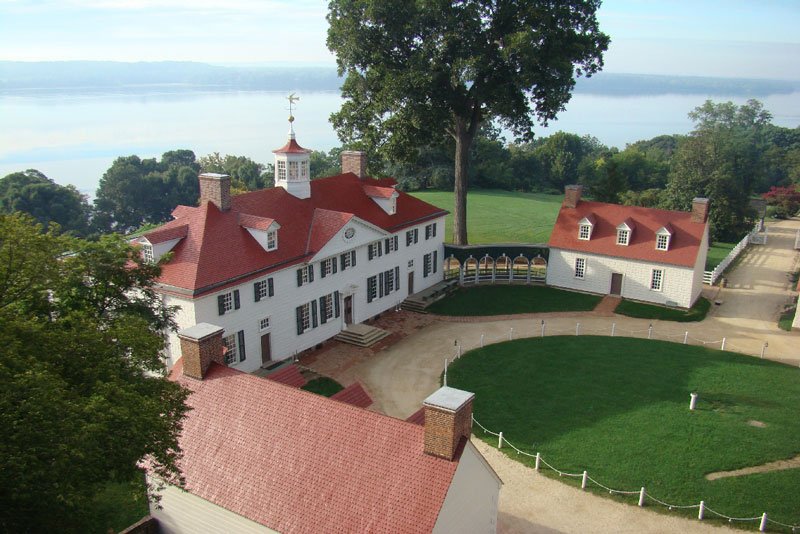
| Route 66 | Cities | Beaches |
|
Mt. Vernon George Washington's Plantation |
 |
Ash Lawn |
Jamestown |
Williamsburg | Yorktown |
| Mt. Vernon is breathtaking. It is incredibly beautiful. Set on a high hill looking out over the broad Potomac River, surrounded by lush forest, the perfectly proportioned buildings are balanded by gardens, lawns, pastures, trails, brick and stone walls and a large dock. You could spend a full day here just taking photos and admiring the aesthetics. The plantation is a work of art, the lines planned carefully to blend in with and complement the landscape. Then, to think that George Washington lived here, before, during and after his role in the French & Indian War, the American Revolution and his years as the first President of the new nation, lends a power to the place that is untouched by any other single location in North America. The Washington family owned this land since 1674, gradually expanding their acreage and developing it as a very prosperous plantation. Washington inherited Mt. Vernon in 1754. The house his father had built occupied the same site as the current mansion. Washington step by step replaced and expanded the older house until nothing was left of it. He lived here his entire life except for his military career and his years as President. He died here, and is buried on the grounds. | 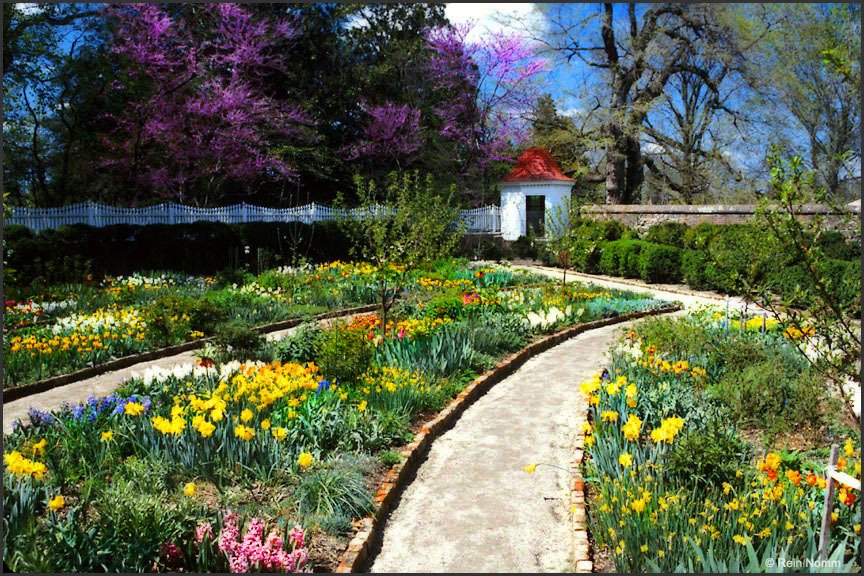 |
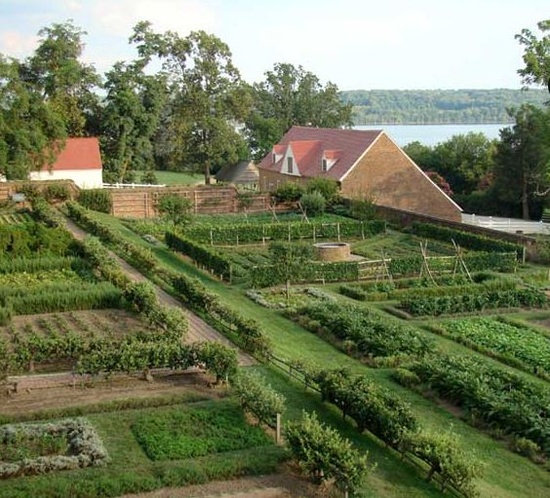 |
The Washington family continued to occupy the estate but it gradually became less prosperous and was no longer able to support itself by 1858. By then, its historical importance was realized, and the Mt. Vernon Ladies Association raised the money and bought it. They have maintained it ever since, relying on admissions and donations. Despite his fame as a military leader, President and Father Of Our Country, Washington considered himself first and foremost a farmer. He kept up with the latest methods, refined and improved many of them, and created some new ones. At left is the Vegetable Garden. Washington raised enough produce to feed the family and slaves for the entire year and sell the surplus for a large profit. He and Thomas Jefferson often shared ideas on farming, so their farms used a lot of the same ideas. But Mt. Vernon had a much milder climate so Washington was able to produce more yield than Jefferson, a source of pride and bemusement for Washington and irritation and envy for Jefferson. The flower garden (above) was mainly Martha's domain. The Washingtons did a great deal of entertaining, and guests loved to walk along the garden paths. Martha made sure a dozen or so different kinds of flowers were always in bloom. She also uses the garden as a source for cut flowers, which she would have placed on the tables and around the house for decoration and aroma. |
| Mt. Vernon is open year round and is usually filled with visitors from around the world, inclouding school groups. It offers lectures, demonstrations, tours, special events, and other activities. On one level, it is a Living History Museum with costumed actors portraying Washington, Martha, slaves, and other characters of the late 1700s. Shown here is President George W. Bush on Presidents Day. The actors are historians thoroughly familiar with the habits, speech, issues and mannerisms of the 1700s. They will pose for pictures and discuss "current" events (of 1798) with visitors. | 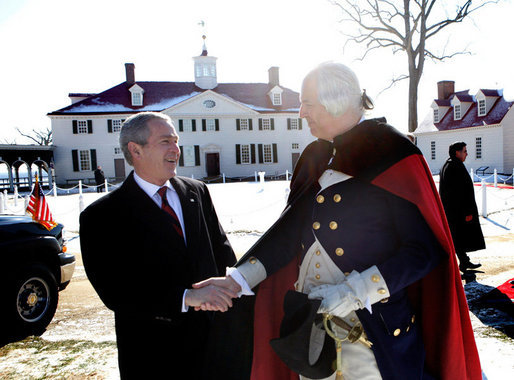 |
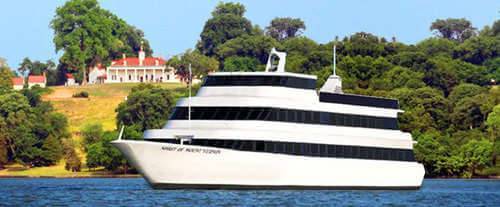 |
One of the options you should consider is a river cruise up the Potomac. The cruises depart from the plantation's own dock. Each cruise lasts an hour. You need to make reservations an hour or two ahead. If you're spending a week in Washington you could come down to Mt. Vernon by boat. They arrive at 10 am and depart for the returen trip at 4:00 pm. |
| Washington inherited 150 slaves along with the plantation but did not believe in slavery. He treated the slaves very well, but made plans to free them. Laws of the day in Virginia made it difficult so Washington proceeded carefully. He hired a lawyer and drew up contracts specifying that elderly slaves, those disabled by injury or illness, and young slaves without parents would remain at Mt. Vernon to be supported by the plantation. Washington apprenticed healthy slaves to craftsmen in the area so they could learn trades and support themselves on their own. As they gained their freedom, many flormer slaves chose to remain residents of Mt. Vernon, working in the area during the day and returning home at night. Enactors walk the grounds and talk to visitors, answering questions and discussing issues of the 1700s. | 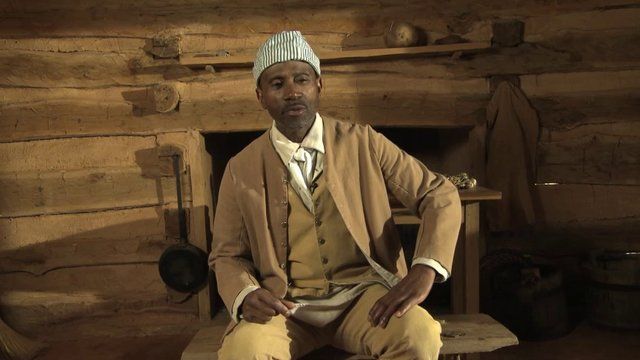 |
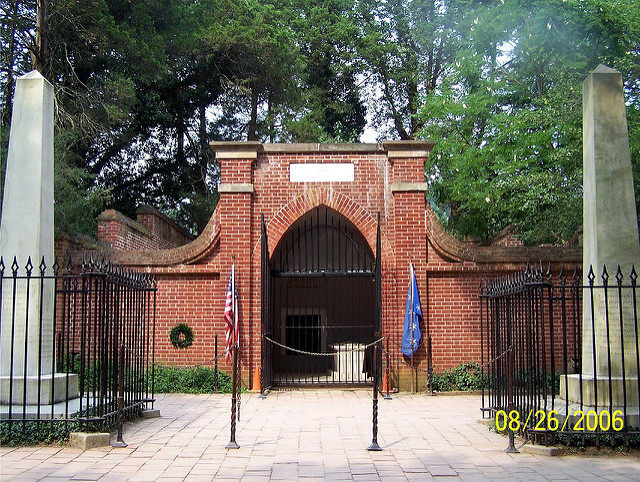 |
Washington's wish was that he and Martha be buried at Mt. Vernon, and he had the tomb built. He was incredibly popular, and there have been several efforts to move his body up the Potomac to either the Washington Monument or one of the two other statues of him . Each time, at the last minute, family members, the State of Virginia or the Mt. Vernon Ladies Association has objected, and Washington's remains are still here. There is a small grave site ceremony twice a day and major ceremonies on July Fourth, Presidents Day and on the day of his death. It is saddening to realize that Washington died prematurely. He was repairing a fence and was caught in a cold, icy rain. He finished the job and by the time he reached the house he was shivering. By next morning he was quite sick, probably with pneumonia. He died a day later. He was already retired, but after having given so many years to serving the nation, Washington had earned a long, prosperous retirement. He had no health problems and would probably have lived another 20 years. |
| During the day, you'll have tours, reenactments, lectures, demonstrations, a river cruise and other activities to juggle. You won't have time for a sit down restaurant. So you need to plan on lunch at the Food Court. Yes, items are overpriced, but not unreasonable. You can order Pizza, Nachos, Burgers, Ice Cream, soft drinks and other fast food, but you can also order Wraps, Salads, Soups, Fruit, Vegetables, Yogurt, Juice and other healthy foods. You can sit outdoors, as seen here, or inside in the air conditioning. | 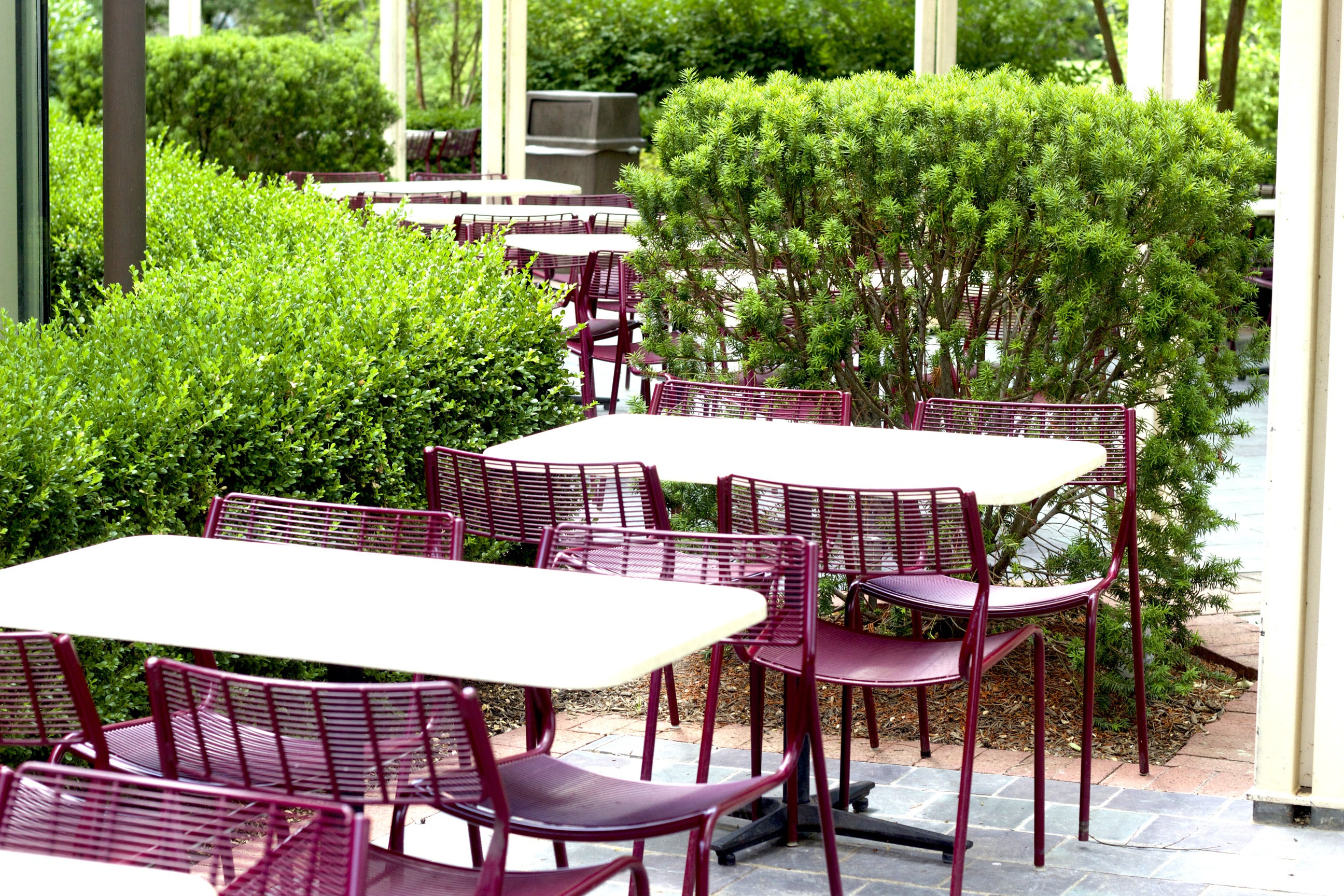 |
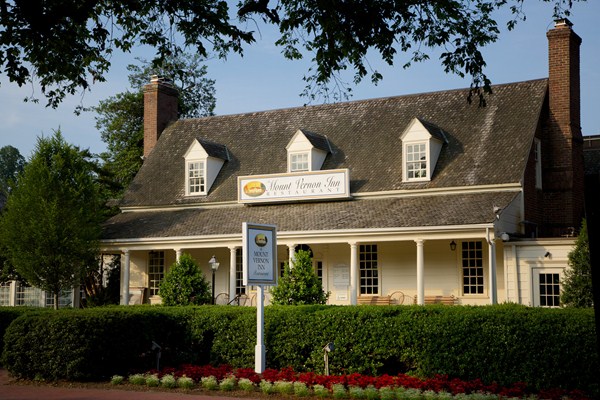 |
At the end of your day, you should conclude your Mt. Vernon visit with dinner at the historic Mount Vernon Inn, right at the edge of the plantation. This is an outstanding restaurant, specializing in Colonial Era food. It's open 5-8 pm. The menu is extensive, but you must try the Hoecake (corn cake with ham and crab meat baked in), Virginia Peanut Soup, Wedge Salad, Shrimp & Grits (made with grits from the gristmill right on the plantation), Colonial Turkey Pye, Caramelized French Green Beans, Garlic Spinach and Grilled Asparagus in Lemon Herb Butter. The Cornbread comes with a Vanilla Bean Honey Butter, and the Sparkling Apple Cider comes from the plantation. |
| The most convenient place to stay is the Hampton Inn, 3.3 miles away. It's a full service hotel, with large indoor pool, fitness center, restaurant, wireless internet and other amenities. Mt. Vernon is a world famous attraction which is particularly popular in the Summer as families bring their children, so you'll want to make reservations at least a month ahead. | 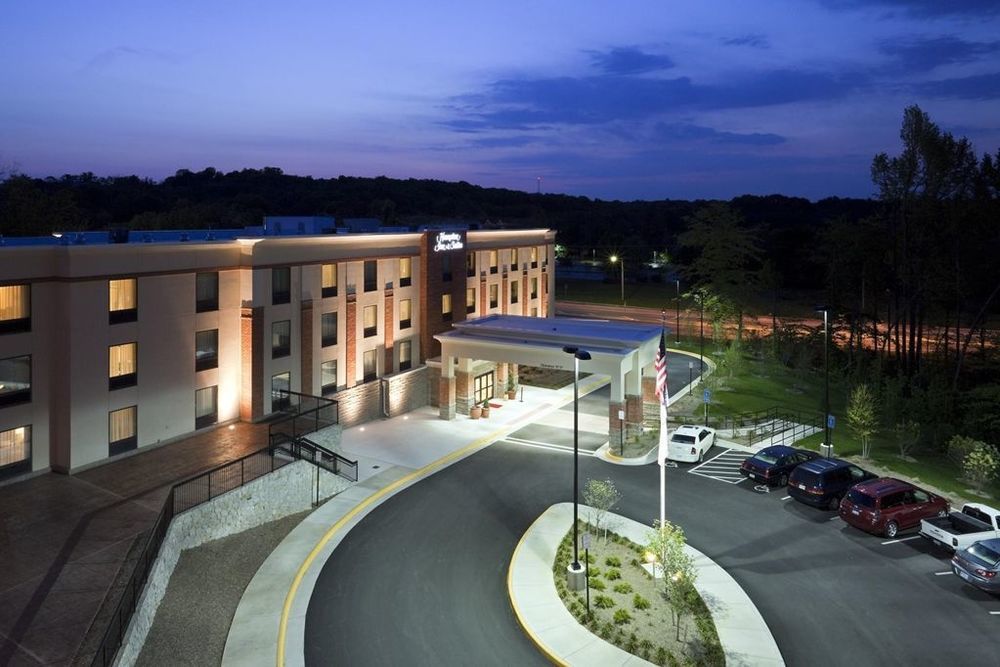 |
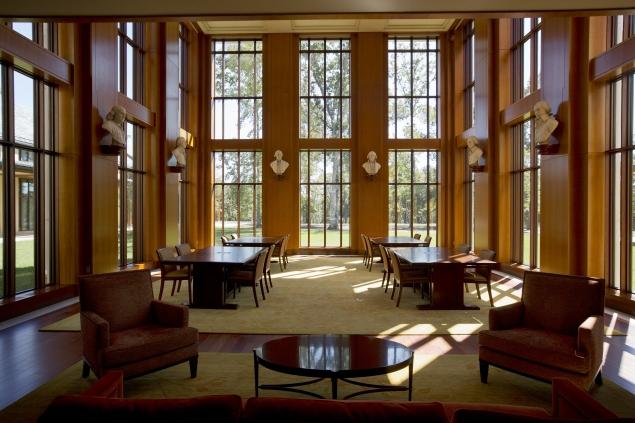 |
The most recent addition to Mt. Vernon is the $138 million Fred W. Smith Library. This 2010 state of the art facility houses all of George Washington's writings, his personal book collection (many with his notes in the margins), government documents from his eight years in the White House, military documents from his years as Commander In Chief of the Continental Army, British documents from his years as an officer during the French & Indian War, 1770-1800 newspapers and magazines, deeds, maps, contracts, bills, timetables, purchase orders, transcripts and other documents from Washington's years at The College Of William & Mary, diagrams from his career as a Surveyor, and plans and lists from his gardens and agricultural enterprises. The Library is open M-F 9-5. It is run through a partnership between the Mt. Vernon Ladies Association and the University of Virginia. The collection also contains a complete set of documents relative to Martha Washington, Slavery and the Mt. Vernon Ladies Society. It hosts frequent workshops, seminars and lectures and an annual Leadership Conference. |
|
|||
|